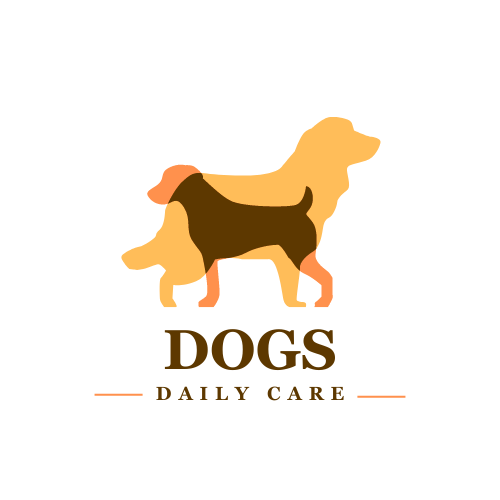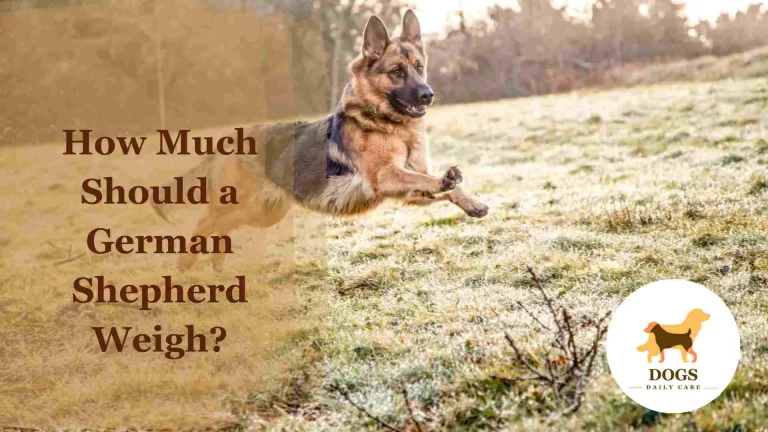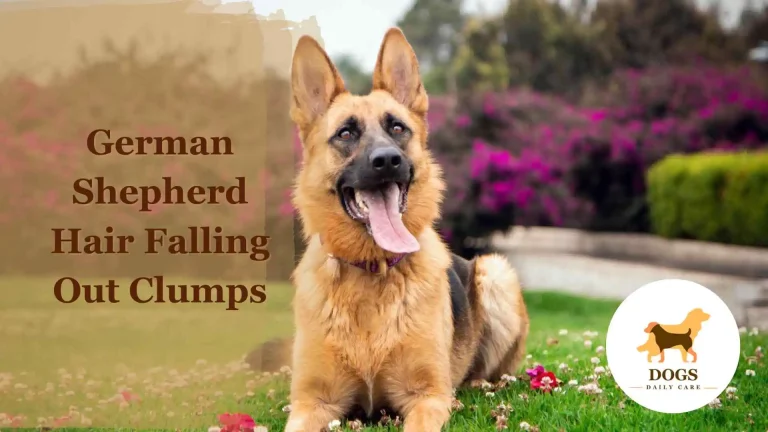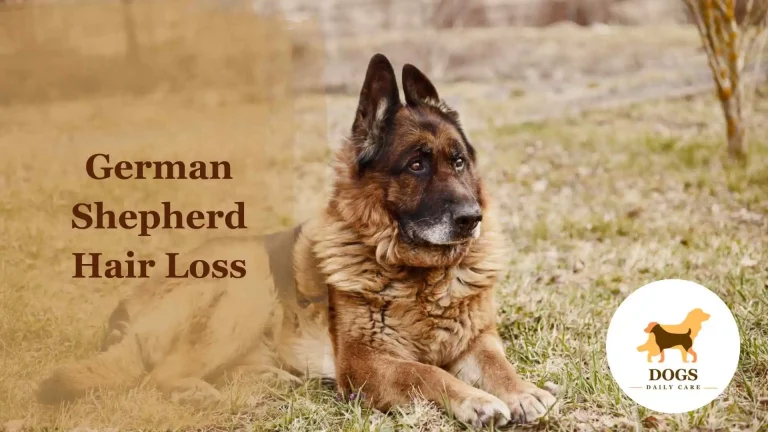German Shepherd Hair Shedding – Prevention and Remedy
Anyone with a love for the loyal and intelligent German Shepherd knows that with this breed, life can get a little hairy. These diligent dogs are known not only for their heroics and intelligence but also for their prolific shedding. A common saying among German Shepherd owners is, “I have a German Shepherd, and in my house, every season is shedding season.” If you find yourself spending a significant amount of time cleaning up after your furry friend, understanding the cause behind the shedding and learning how to manage it can be a game-changer.
German Shepherds sport a luxurious double coat that’s both a blessing and a curse. While it equips them to handle various weather conditions, it also leads to a considerable amount of hair shedding year-round, with a notable increase during the spring and fall. This constant flurry of fur can leave owners feeling like they’re living in a fur-coated wonderland. But fret not, with the right knowledge and a little patience, managing your German Shepherd’s hair shedding can become a less daunting task.
In this guide, we will delve into the nature of German Shepherd hair shedding, exploring the intricacies of their coat, the shedding cycle, and factors that can affect the level of shedding. Moreover, we will provide practical tips and tricks to keep your home as fur-free as possible, and your beloved companion comfortable and well-groomed. So, whether you are a seasoned German Shepherd owner or are considering adopting one, read on to arm yourself with essential information for navigating the fluffy fallout that accompanies these magnificent dogs.
Understanding German Shepherd’s Coat
German Shepherds boast a double-layered coat designed by nature for both aesthetic appeal and climatic resilience. The outer coat, dense and straight, acts as a shield against external elements and UV rays. In contrast, the softer undercoat offers insulation, ensuring the breed can function as working dogs in diverse climates.
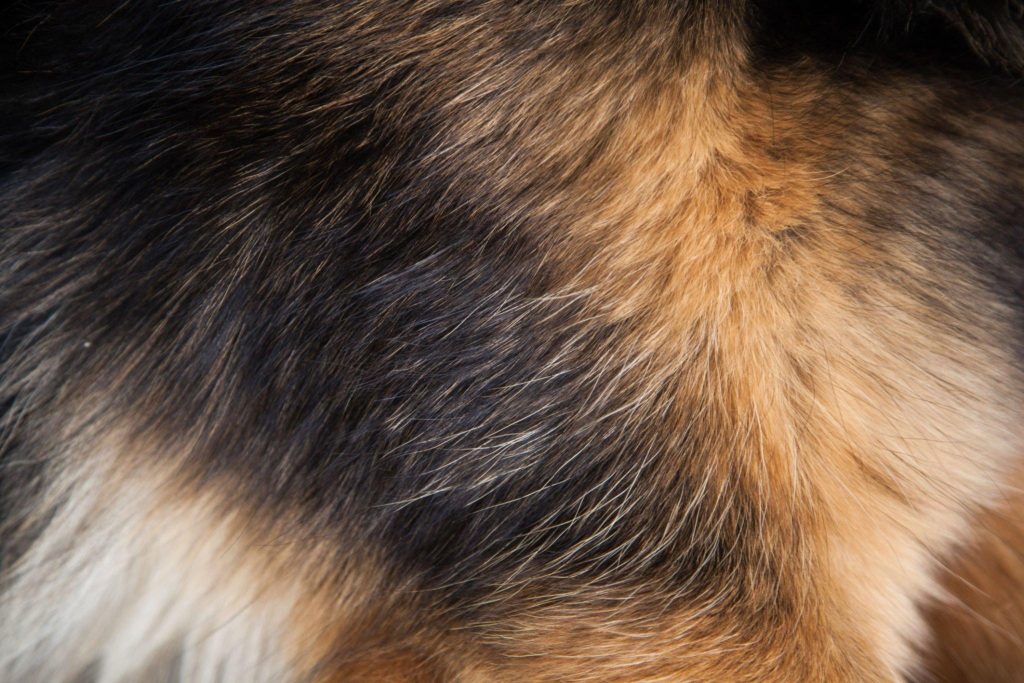
However, this double coat also leads to pronounced shedding, particularly during spring and fall. During these seasons, German Shepherds “blow” their undercoat, adapting to changing temperatures. This shedding is a natural, vital process for maintaining their coat’s health and effectiveness.
Understanding the intricacies of a German Shepherd’s coat helps owners navigate the challenges of shedding. Armed with this knowledge, you can ensure your dog remains comfortable and well-groomed throughout the year.
The Shedding Cycle
If your home feels like a furstorm epicenter, understanding your German Shepherd’s shedding cycle can offer relief. This cycle comprises three stages: growth (anagen), rest (catagen), and shedding (telogen). Each hair follicle operates independently through these phases, leading to a near-continuous shedding process, amplified by seasonal changes.
With summer’s warmer temperatures, German Shepherds shed their dense undercoat. In contrast, winter sees them discard the summer undercoat to welcome a thicker one for insulation. This distinct shedding spree, known as “blowing coat,” is especially evident due to their dense double coat.
Grasping this cycle and its seasonal rhythm can empower owners to better manage the fur fallout. Routine grooming during peak shedding periods—spring and fall—helps control hair dispersal. While a fur-free environment might be aspirational, a consistent grooming regimen makes minimal shedding a realistic aim.
Factors Affecting Shedding
While the seasonal shedding cycle is a primary factor contributing to the fluffy tumbleweeds around your home, several other elements can influence the amount of shedding you experience with your German Shepherd. By understanding these factors, you can take proactive steps to manage the shedding and ensure your dog’s overall well-being.
Nutrition
The importance of a well-balanced diet cannot be overstated when it comes to managing German Shepherd hair shedding. High-quality dog food rich in essential fatty acids, particularly Omega-3 and Omega-6, can promote a healthy, shiny coat and reduce excessive shedding. Additionally, providing your dog with a dietary supplement designed to support coat health can also be beneficial. Consulting with your veterinarian for personalized nutritional advice is always a wise decision.
Health
Various health issues, ranging from skin allergies to more severe medical conditions, can lead to increased shedding. Regular check-ups with your vet will help catch any potential problems early. If you notice sudden or unusual shedding, it’s crucial to seek professional advice to rule out underlying health issues.
Age
Puppies and older German Shepherds may experience different shedding patterns compared to their adult counterparts. While puppies shed their fluffy baby coats to make way for adult fur, older dogs may shed more due to changes in skin elasticity and hair follicle strength.
Genetic Factors
Like humans, each German Shepherd is unique, and genetics play a part in the amount they shed. Some German Shepherds may naturally shed more than others due to their individual genetic makeup.
By having a firm grasp on the factors affecting your German Shepherd’s shedding patterns, you can tailor your grooming routine to meet their specific needs, keeping shedding under control and providing a comfortable and healthy environment for your beloved companion.
Managing the Shed: Tips and Tricks
Taming the torrent of fur that comes with a German Shepherd may seem like a Herculean task, but with a few tips and tricks up your sleeve, it can become a manageable, even enjoyable, part of your routine.
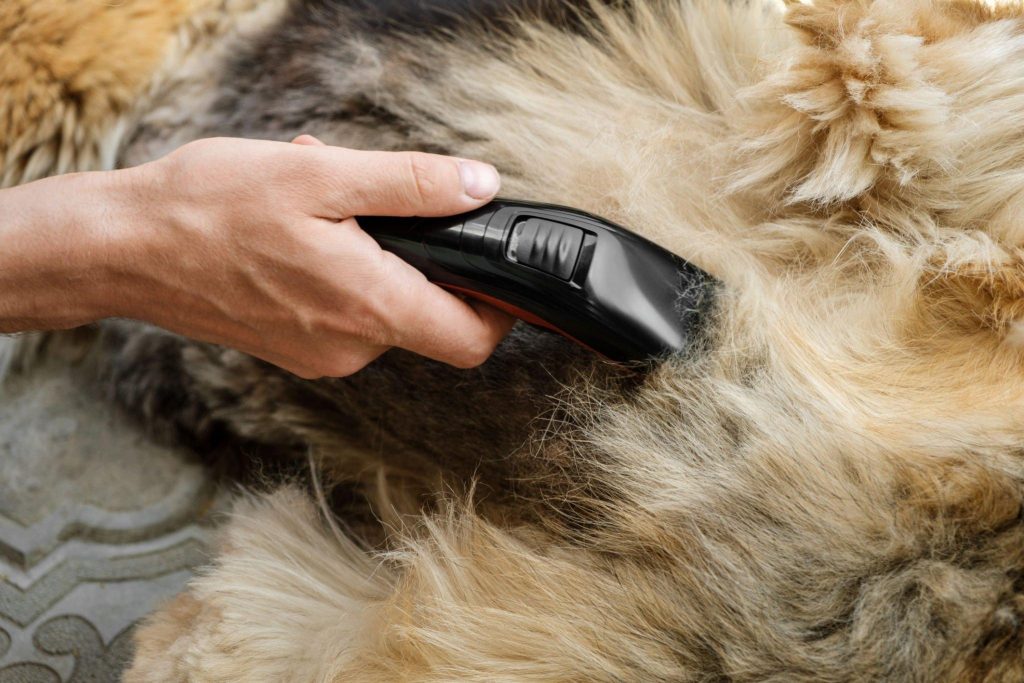
Here’s how you can keep the shedding in check while ensuring your furry companion stays comfortable and healthy:
Regular Grooming
Regular grooming is the cornerstone of managing German Shepherd hair shedding. A routine that includes brushing at least three times a week, or daily during peak shedding seasons, can significantly reduce the amount of loose hair. Use a deshedding tool or a rake brush to effectively remove loose hairs from the undercoat, promoting better air circulation and a healthier coat.
Nutritional Supplements
Incorporating supplements rich in Omega-3 and Omega-6 fatty acids can promote a shinier, healthier coat, reducing excessive shedding. Consult with your vet to find a suitable supplement that caters to your German Shepherd’s dietary needs.
A Balanced Diet
Providing a balanced diet filled with essential nutrients will not only benefit your German Shepherd’s coat but their overall health. Look for high-quality dog food with wholesome ingredients to nourish their coat from the inside out.
Regular Check-ups
Routine veterinary check-ups will ensure your German Shepherd is in good health, as underlying medical issues can often manifest through excessive shedding. Your vet can also provide personalized advice for managing shedding based on your dog’s individual health and needs.
Creating a Pet-Friendly Cleaning Routine
Embrace the shedding by equipping your home with pet-friendly cleaning tools like high-efficiency vacuums, lint rollers, and even robot vacuums that can be scheduled to clean throughout the day.
Hydration
Ensure your German Shepherd stays well-hydrated. Proper hydration contributes to a healthier skin and coat, which in turn can lead to less shedding.
Taking the time to understand and address your German Shepherd’s shedding can lead to a more comfortable and enjoyable experience for both you and your beloved companion. And while a completely fur-free existence might be unattainable, creating a well-managed, healthy living environment is a very achievable aspiration.
When to Seek Professional Help
Though shedding is a natural occurrence in the life of a German Shepherd owner, there are instances when the fur fallout might signify something more concerning than just the changing seasons. Being able to differentiate between normal shedding and potential health issues is crucial for maintaining your German Shepherd’s well-being.
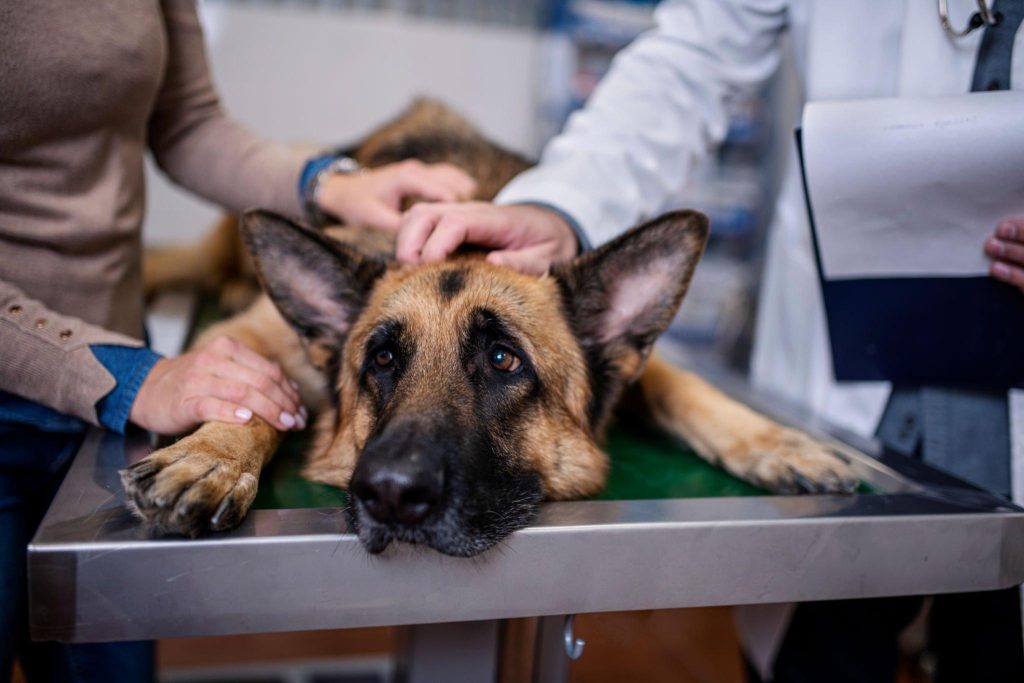
Unusual Shedding Patterns
If you notice your German Shepherd is shedding excessively or more than usual outside of the typical shedding seasons, it might be time to seek professional advice. Unusual shedding can be triggered by various factors including allergies, skin infections, or other underlying health issues.
Skin Irritations and Infections
Check your dog’s skin for signs of redness, sores, bumps, or bald patches. A healthy skin is a precursor to a healthy coat, and any abnormalities may warrant a trip to the vet.
Changes in Diet or Environment
Sometimes changes in your German Shepherd’s diet or environment can trigger increased shedding. If you’ve recently switched dog foods or moved to a new location with a different climate, and notice a spike in shedding, consulting with a vet or a professional groomer for advice on managing these changes can be beneficial.
Consulting with a Professional Groomer
Professional groomers are experienced in managing German Shepherd hair shedding and can provide valuable insights and services to help maintain a healthy coat. They can recommend the best grooming tools, techniques, and schedules tailored to your dog’s specific needs.
Veterinary Advice
If you suspect that your German Shepherd’s shedding is health-related, a vet can provide a thorough examination and recommend a treatment plan. They may also provide dietary recommendations or prescribe supplements to promote a healthier coat and reduce excessive shedding.
Remember, a sudden alteration in your German Shepherd’s shedding pattern or coat quality warrants professional attention. Early intervention can often lead to better outcomes, ensuring your furry companion remains comfortable, healthy, and happy.
Frequently Asked Questions (FAQs)
1. Why is my German Shepherd shedding so much?
German Shepherds are known for shedding heavily due to their double coat, which provides insulation and protection against environmental factors. Seasonal changes, health conditions, nutrition, and age can also contribute to the amount they shed.
2. What is “blowing coat” in German Shepherds?
“Blowing coat” is a term used to describe the shedding process where German Shepherds shed their undercoat to adjust to changing seasonal temperatures. This happens typically twice a year, during spring and fall, leading to a significant increase in shedding during these periods.
3. How can I reduce my German Shepherd’s shedding?
Regular grooming, a balanced diet rich in essential fatty acids, and ensuring your German Shepherd remains hydrated are key steps to reducing shedding. Additionally, regular vet check-ups can help catch and address any underlying health issues that might be causing excessive shedding.
4. Are there any German Shepherd mixes that shed less?
Some German Shepherd mixes may shed less, depending on the traits they inherit from the other breeds in their mix. For instance, a German Shepherd Poodle mix (Shepadoodle) might shed less as Poodles are known for their hypoallergenic coats.
5. How often should I groom my German Shepherd during shedding season?
During shedding seasons, it’s advisable to groom your German Shepherd daily to help remove loose hairs from the undercoat, promote better air circulation, and keep their coat healthy. Professional grooming sessions can also be scheduled every few months to manage shedding effectively.
Conclusion
Tackling the hair shedding of a German Shepherd might seem daunting initially. However, with an understanding of their shedding patterns, influencers, and the right management techniques, the challenge eases. Regular grooming, a nutritious diet, and consistent vet visits are crucial for your pet’s health and appearance. Embracing this proactive approach not only minimizes shedding troubles but also solidifies the bond you share with your Shepherd.
Navigating the shedding seasons signifies the commitment of a devoted pet owner. The relentless hair fall stands in contrast to the unmatched loyalty and affection a German Shepherd offers, making every grooming session valuable. As you synchronize with their shedding patterns and apply efficient methods, a gratifying regimen unfolds, ensuring your pet’s well-being and a cleaner living space, all while showcasing your steadfast dedication to their care.
